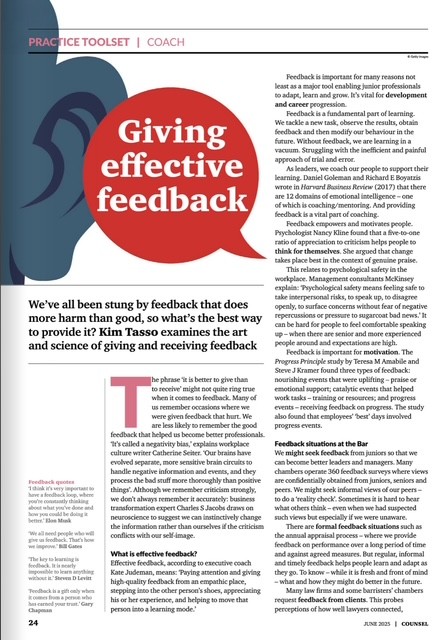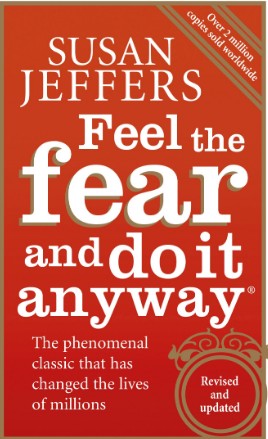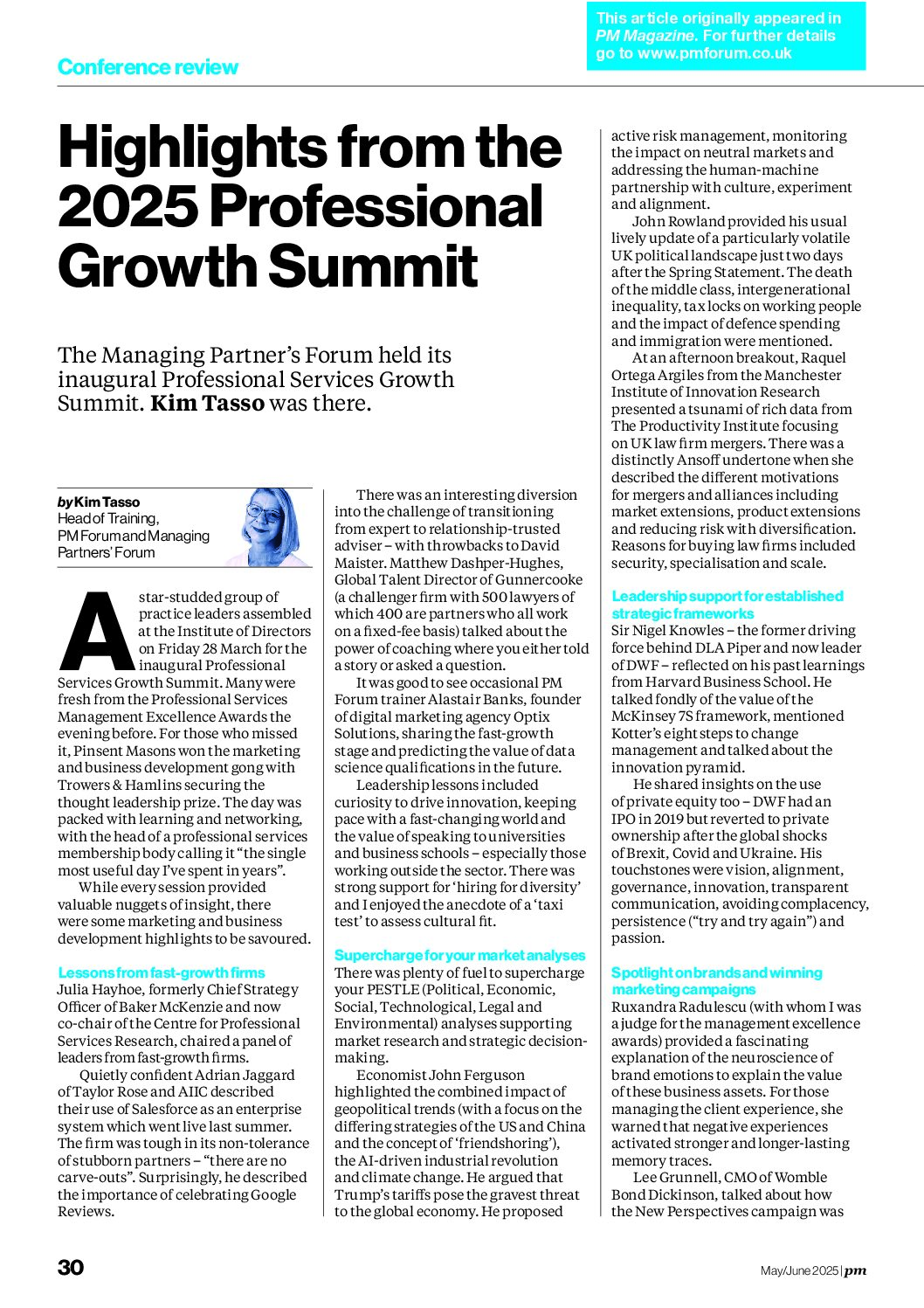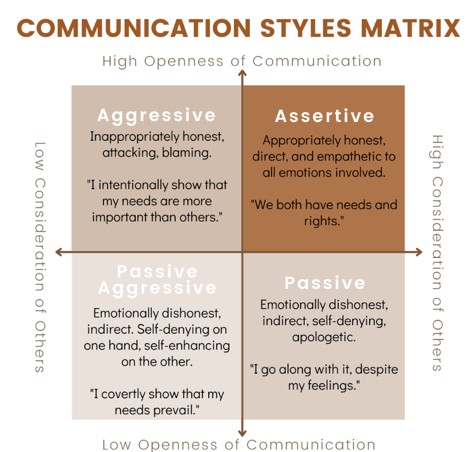
This article summarises the key points from a recent presentation I prepared on Leadership: Dealing with resistance to change. Everyone made enormous changes during the Covid19 crisis – seemingly with little resistance. But as we emerge from the crisis and professional service firms attempt to maintain the fast pace of transformation, will they again meet the resistance to change that existed before Covid19? Some causes of resistance to change and possible remedies are considered across four topics:
- Insights into change management and resistance during Covid19
- Resistance to change after Covid19
- How the neuroscience of organizational change can help us reduce resistance
- My key thoughts on minimising resistance to change
1. Insights into change management and resistance from Covid
During the Covid19 just about everyone changed – and in radical ways. Our work and home lives changed beyond recognition. We adjusted to working remotely from home, learning a lot of new technology and interacting over digital channels. We started to behave differently when we went out – for example, by wearing masks and social distancing. Our family and personal relationships were put on hold. We stopped doing a lot of things that were an integral part of our daily lives. And we had to adapt and behave in many new and unfamiliar ways.
There were several factors at play:
- Everyone was united against a common enemy – we were all facing the threat of the virus. It threatened our lives, the lives of those we love and the lives of the weak and vulnerable. It threatened our businesses, our work and our income. It threatened things we hold dear and take for granted – not least the NHS and our freedom. There was no choice but to change – everybody did it. Early change management theorists talked about the need for a “burning platform” to galvanise action. Covid19 was the ultimate burning platform.
- From persuasion science (see Cialdini’s work on the six principles of influence and persuasion) we know that we look to others for what we should do – especially in times of uncertainty. Everyone and everything around us changed – we did what others did. It was the ultimate demonstration of our herd or tribe instinct.
- Our survival anxiety was significantly higher than our learning anxiety. Usually, we stay safe in our comfort zones (“A behavioural state where person is anxiety neutral using a limited set of behaviours to deliver steady level of performance usually without a sense of risk” (White, 2009)). Learning anxiety prevents us from learning and adopting new ways of behaviour. Yet when our survival anxiety exceeds our learning anxiety – as it did during Covid – we grasp the nettle and learn. Our fears about temporary incompetence, punishment for incompetence, loss of personal identity and loss of group membership were put to one side.
- Most people – including leaders – became more authentic and expressed vulnerability. To some extent, this normalised everyone’s feelings of anxiety and vulnerability. It overcame the “Us vs. Them” divide so we all became part of one group.
- In a crisis, people look to their leaders for clarity, decisiveness and reassurance. The need for consultation declined as people accepted authority and autocracy that would lead them through the crisis to safety.
- There was a huge effort on employee engagement. The WFH changes meant that all leadership and management teams HAD to communicate more thoroughly and regularly with everyone in their organisation. One law firm even ensured every member of staff was called every day.
2009 research from MacLeod and Clarke suggested four factors that distinguished those organisations with high employee engagement:
- Visible, empowering leadership providing a strong strategic narrative
- Engaging managers who focus their people and give them scope
- An employee voice throughout the organisation for reinforcing and challenging views
- Organizational integrity – the values on the walls are reflected in the day-to-day behaviours
There are, of course, huge cultural differences in how people respond to change and how likely they are to exhibit resistance. Leaders of global organisations witnessed how transitions were tackled differently across their various territories. (See an introduction to cultural differences and cultural intelligence is addressed in the Change Catalyst book by Campbell MacPherson).
It was interesting to see people going through the grief process at different speeds as they dealt with the loss of their life before lockdown prior to experimenting with the new order of things. Recognising emotions during periods of fundamental or rapid change is important. This eight minute video explains how emotions fluctuate during the change process.
Happy workers are 13% more productive. Emotional commitment from people is four times more powerful than rational commitment. Habit and unconscious bias play a big role in resistance to change. So the emotional intelligence levels of leaders are critical to recognise, address and minimise resistance.
I valued the huge boost it gave me in empathy with some of my more mature lawyer, accountant and surveyor clients. I genuinely felt on one occasion huge frustration and anger at how the shift to digital was being foist upon me.
2. Resistance to change after Covid
After Covid we will return to some aspects of the way things were. But there is likely to be more fundamental change ahead. And the pressure to maintain the rapid pace of transformation will remain.
We will have to start working hard to minimise, avoid and deal with resistance. Remember that two thirds of all change initiatives fail – and resistance is one of the main reasons.
There are articles in HBR from as long ago as 1969 on resistance – and it was then apparent that most resistance was due to not technical but social change.
The initial challenge will be to get people back into the office. There may be genuine safety fears about the lingering threat from Covid. But there is also likely to be inertia and resistance as people have to face another fundamental change to daily routine – a return to the time, cost and inconvenience of commuting again. Then there will be more resistance as we try to implement different business models and new ways of working.
We need to start by understanding the different types of resistance to change:
- Passive change resistance – where people experience a threat response (freeze, flight or fight) to imagined threats. Encourage them to verbalise their fears.
- Active change resistance – where people experience a threat and start fighting and persuade others to resist as well. Ask them to verbalise their concerns and address them early in the change process.
- Attachment change resistance – where people argue hard to protect the status quo or find issues with proposed changes. They are in anchoring or confirmation bias. They may experience cognitive dissonance as they try to hold two competing views in their mind. Appeal to shared principles and values in the first instance.
- Uncertainty change resistance where people – in the absence of information – speculate about changes and possible futures. They may conjure up worst case scenarios. So provide as much information as possible so there is no information void.
- Overload change resistance – Complaining about general things as people reach their limit on what they can deal with – the day-to-day and the new changes. Try to work with the positive attention grabbers instead – and look at the scheduling of new changes so that they are not overwhelming. Occasional periods of reflection and consolidation on what has been achieved may help.
3. Neuroscience of organisational change and insights to minimise resistance
There’s a great book by Hilary Scarlett on the Neuroscience of organisational change. Some key points from this include:
- Uncertainty is disturbing – People find it’s better to have certainty about a negative outcome than uncertainty.
- In a threat state – caused by uncertainty – we are more vulnerable to feeling anxiety, anger and insecure and more likely to be competitive with our colleagues.
- Allow people to come to their own conclusions – we are more likely to support something where we have made an active choice.
- Our sensitivity to fairness is heightened during change.
- Stress is increased by criticism, boredom and change – and self-control is limited.
- We are more likely to be risk averse if hungry – so make sure people have regular meal breaks – schedule key meetings after eating.
- Leaders must be predictable and certain – and must remain in touch with how employees feel.
- Leaders must also make the careful balance by providing early information – to avoid information vacuums which can lead to rumours – and having to correct information later.
- Storytelling and image-based visions are more likely to lead to employees following a leader.
- Face-to-face communication is better during change programmes.
We should be aware of the need to create psychological safety. One way is with an appreciative environment where there is a five to one ratio of positive to negative feedback. Another is the 10 components of a thinking environment by Nancy Kline.
In May 2017, there was an article in Harvard Business Review (HBR) on overcoming resistance to change by Sally Blount and Shana Caroll where the authors report that research shows 50-75% of all change efforts fail. They suggest that the first challenge is to identify the source of resistance and to understand the perspective of the resistors. They identify the main reasons for resistance as: disagreement on substantive grounds with the proposed change and the need for respect and feeling rushed. This effectively distinguishes between rational and emotional resistance to change. Their solution in all cases is to talk and listen to the resistors bearing in mind the following ground rules:
- Forget efficiency (use face-to-face communication)
- Focus on listening (take less than 20% of the airtime and repeat back what you hear)
- Be open to change yourself (adopt a genuinely open attitude)
- Have multiple conversations (at least two conversations are required with at least two days between them) and reflect back what you have heard and how this will change your plan
In an HBR article in April 2020 by Jonah Berger, the suggestions to persuade people to change their behaviour were:
- Highlight a gap – Increase people’s sense of freedom and control and ignite cognitive dissonance by pointing out a disconnect between their thoughts and actions
- Pose questions – Avoid the push approach of telling people what to do, ask a question that shifts the listener’s role
- Ask for less – Break down the request into smaller parts. This is a key idea in the book “Switch: How to change things when change is hard”
4. My key thoughts on minimising resistance to change
So my key thoughts about minimising resistance to change and increasing buy-in going forward:
- Leaders need to answer three questions:
- Why do we need to change?
- What does success look like?
- What’s in it for me?
- It helps if we understand the concept of the adaptive third – try to identify those in your organisation who are in this group who will act as your early adopter group. Some people suggest identifying – and keeping separate – your resistors and reformers. So segment your workforce accordingly.
- People need to feel a sense of autonomy and control – so involve them in discussions and let them come up with plans on how to tackle required changes. And remember that personal transition ALWAYS lags behind organisational change.
- Align your recognition and reward systems to the behaviours needed by the change programme
- Ensure that the communication and engagement efforts continue – keeping everyone informed about what is happening and why. Seek their views – and consult on planned changes as early as possible. Remember to use pull rather than push communications.
- Harness influence factors such as authority – ensure that your most senior people act as great role models for how you want others to act.
- Use the human principles of commitment and consistency – get people to sign up publicly to what they intend to do – they are more likely to stick to public pledges.
- Use change catalysts to act as champions and sponsors – and ensure they focus on the desired outcome rather than the process.
Remember that change is inevitable. Successful change isn’t!
Related posts on change management and resistance to change
Change management basics – personal and organisational change | Kim Tasso
change process – Emotions when reacting to change | Kim Tasso
Your personal transition – Endings, neutral zone and new beginnings | Kim Tasso
Change management and Employee engagement | Kim Tasso
thoughts on managing change and leadership | Kim Tasso
Changing behaviour in the workplace to boost productivity – psychology | Kim Tasso
Change management – Change Catalyst book review by Kim Tasso | Kim Tasso
Small changes that spark big influence (persuasion science) | Kim Tasso
Cross cultural communication – Kim Tasso | Kim Tasso
Change management – Millennials, metaphors and resistance | Kim Tasso
Change management book – Switch (Chip & Dan Heath) | Kim Tasso
change management and organisational change | Kim Tasso
ready to change? remember the change process | Kim Tasso
Building Resilience – Regulation, Reframing, Relationships and Reflection | Kim Tasso
Change management and creativity – the adaptive third | Kim Tasso
Book review: Neuroscience for organizational change by Hilary Scarlett | Kim Tasso
Helping people change: Coaching with compassion | Kim Tasso









